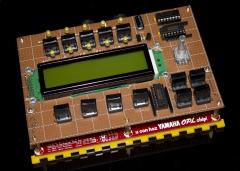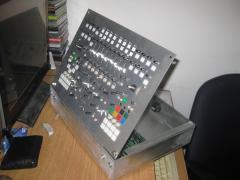-
Posts
3,633 -
Joined
-
Last visited
-
Days Won
36
Content Type
Profiles
Forums
Blogs
Gallery
Everything posted by Hawkeye
-
happly hugs his new seq v4 cs board for the portable sequencer - thanks SmashTV! :-D
- Show previous comments 6 more
-

-

big-size encoders are needed, still looking myself for cheap "pushable" alternatives (for data entry accelleration when pushed), if you find something, let me know, please :) - horizontal distance between the three encoder pins, 4.3mm each. Distance from center encoding pin to "push" contact pin vertical 16.67mm.
-

-
just hates customs, i mean, just a simple SEQ CS PCB it could slip through, once? Its not about the money, but about having to appear in person and wait for an hour to pay a few euros of fee after a 30km drive - one small customz bureau visit can ruin your whole day...
-
received a bunch of MN3008 analog delay chips from smallbear :) Thanks for the link, J, that shoppe is most magnificient :)






